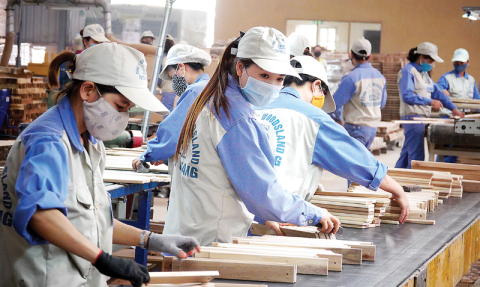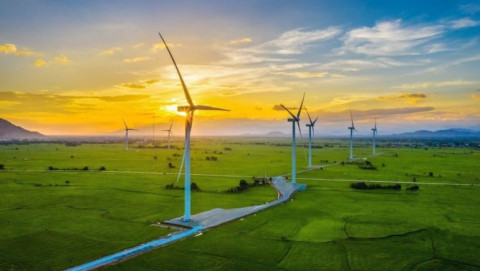Practical applications of carbon credits in the economy. Part XXI:Carboncor Asphalt - An effective solution for Vietnam to achieve net zero emissions
- 103
- Socially Responsible Enterprise
- 10:44 14/09/2024
DNHN - Vietnam is actively implementing green construction solutions to achieve the goal of net zero emissions by 2050. These solutions reduce greenhouse gas emissions and support sustainable development in the construction industry.
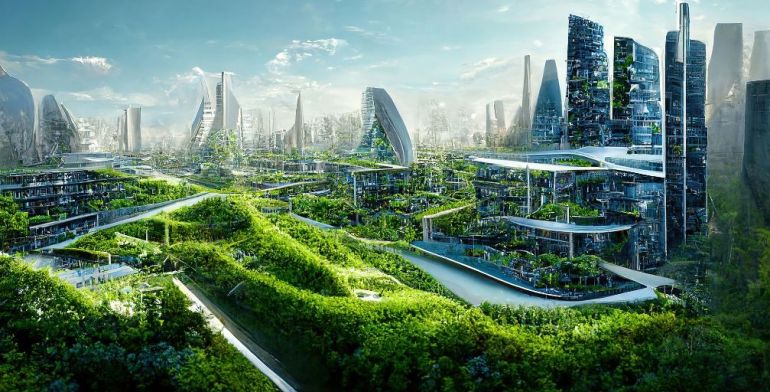
Using carbon credits as a greenhouse gas offset strategy
In the context of Vietnam's efforts to fulfill its commitment to achieving net zero emissions by 2050, the application of green building materials has become a crucial factor. Green building materials, such as Carboncor Asphalt (CA) and recycled materials, play a key role in reducing greenhouse gas emissions and achieving carbon neutrality. CA, for instance, is produced and applied at ambient temperatures, reducing CO2 emissions by up to 71.8% compared to traditional hot mix asphalt, while also saving up to 78.4% of energy consumption. This reduction not only helps lower environmental pollution but also supports Vietnam's goal of lower emissions.
Moreover, green building materials are often produced from recycled materials or have a high potential for recycling, contributing to the reduction of construction waste. For example, bricks and concrete made from fly ash or industrial waste not only reduce waste but also lessen the demand for raw materials, minimizing the extraction of natural resources. The use of these materials helps reduce CO2 emissions during production and construction while promoting sustainable development and environmental protection.
In addition to reducing greenhouse gas emissions, green building materials also enhance energy efficiency in construction projects. Materials such as high-performance insulation and reflective coatings help reduce the energy demand for air conditioning and heating systems, thus lowering the carbon emissions associated with energy consumption. Integrating these solutions into construction not only helps reduce energy consumption but also supports the achievement of the nation's sustainable development goals.
Thus, the application of green building materials is an essential step for Vietnam to reduce greenhouse gas emissions and move toward carbon neutrality. These materials not only improve the environmental efficiency of the construction industry but also contribute to the nation's collective efforts to protect the planet for future generations.
Carbon credits in the building materials industry can be used in various ways to promote sustainable development. Companies producing building materials can purchase carbon credits to offset the CO2 emissions generated during their production processes. Meanwhile, construction projects can use carbon credits as part of a greenhouse gas offset strategy while implementing technological and procedural improvements to reduce emissions. For example, construction projects utilizing green technology such as Carboncor Asphalt (CA) can earn carbon credits through emission reductions compared to traditional materials.
The adoption of carbon credits in the building materials sector not only helps companies and projects achieve emission reduction targets but also creates incentives for the development and application of green technologies. Carbon credits can enhance the brand value and competitiveness of companies in the construction market while facilitating investments in sustainable solutions. Furthermore, the purchase and use of carbon credits can support environmental protection projects, such as reforestation or land reclamation, helping to balance the environmental impact of the construction industry.
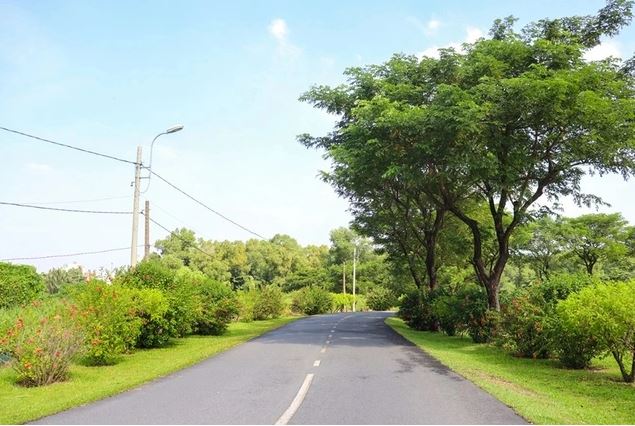
To effectively manage and monitor the use of carbon credits, clear standards and regulations need to be established. The recognition and certification of carbon credits must be based on reliable measurement and verification methods to ensure accuracy and transparency. Regulatory agencies and certification bodies must work closely with stakeholders in the construction industry to build an efficient carbon credit system while promoting the adoption of emission-reducing technologies and materials.
Vietnam has applied CA in numerous projects since 2008, with official licensing granted in 2009. CA has been widely used across the country in road upgrading and renovation projects. Survey results show that CA pavement maintains good flatness, uniform roughness, and no significant damage. However, further research is needed on standards and technical specifications to ensure the quality and effectiveness of projects using CA.
Carboncor Asphalt contributes to Vietnam's commitment to achieving net zero emissions by 2050
Carboncor Asphalt (CA) is a special type of asphalt produced and applied at ambient temperatures, offering many environmental benefits. CA technology is considered a green, environmentally friendly solution due to its ability to reduce greenhouse gas emissions. According to a study by the University of Transport Technology in 2024, the total greenhouse gas emissions of CA reach only 11.7 kg CO2-eq/ton of asphalt, reducing emissions by up to 71.8% compared to hot mix asphalt (HMA), which emits up to 41.5 kg CO2-eq/ton of asphalt. Additionally, CA's energy consumption is 111.5 MJ/ton of asphalt, a reduction of 78.4% compared to 516.6 MJ/ton for HMA. These figures demonstrate that CA is an effective solution for reducing greenhouse gas emissions, contributing to Vietnam's commitment to achieving net zero emissions by 2050, as stated at COP26 and reaffirmed at COP28.
Accordingly, Carboncor Asphalt was successfully tested in Vietnam in 2008 and officially licensed by the Ministry of Transport in 2009. By 2014, the Directorate for Roads of Vietnam issued TCCS 09:2014 on the construction and acceptance of CA layers in road pavement construction and repair. Since then, CA has been widely applied in the northern, central, and southern regions, as well as on Cô Tô Island. It has been used for upgrading, renovating, and constructing new roads, ranging from national highways and provincial roads to district and inter-commune roads.
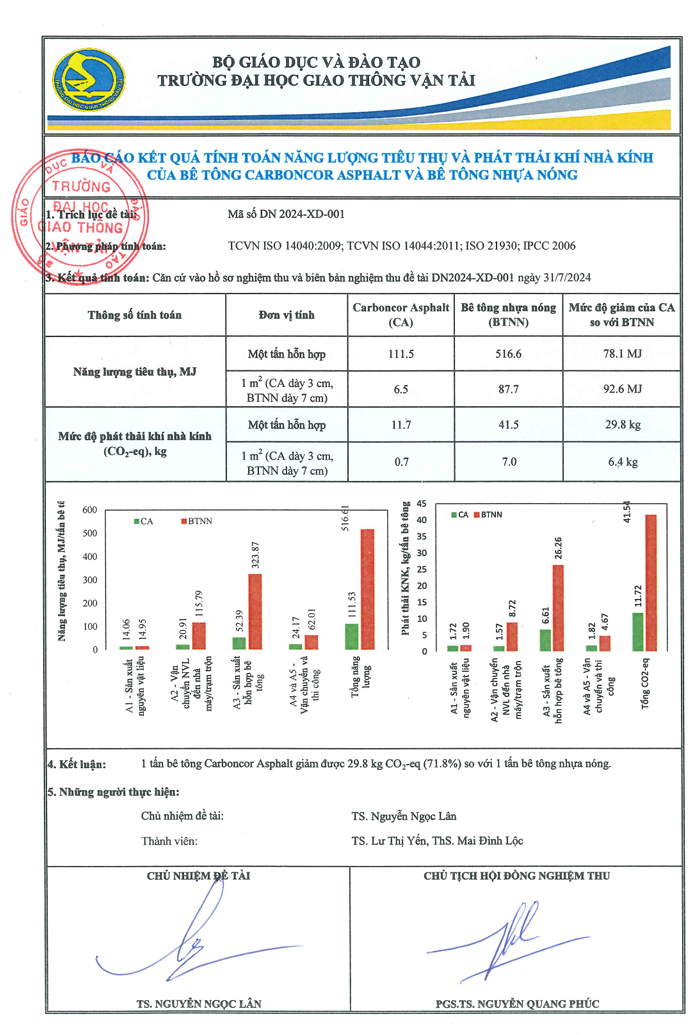
Although CA has been widely used, current standards still do not include typical structures and specifications for CA layers. Therefore, research is needed to determine the material parameters for CA to serve the design of flexible pavement structures according to TCCS 38 and TCCS 37. For example, the pavement structures of projects using CA in all three regions and Cô Tô Island should be examined to propose typical structures for the use of CA in Vietnam.
Over the past decade, Carboncor Asphalt (CA) has been applied to over 1,100 projects, with a total length exceeding 2,000 km nationwide, from the North to the South. To evaluate the actual effectiveness of projects using CA, in 2023, Carboncor Vietnam JSC collaborated with investors, the Key National Road Laboratory I – Institute of Transport Science and Technology, and a research group to conduct surveys on projects in the northern, central, and southern regions. Surveyed routes include the island district of Cô Tô and Provincial Road 329 in Quảng Ninh (northern region), roads in Nghệ An and Hà Tĩnh (central region), and roads in Đồng Nai and Bến Tre (southern region).
A representative from Carboncor Vietnam JSC stated that the evaluation included various aspects to assess the quality of CA pavement. Specifically, the survey team inspected and evaluated the overall condition of the pavement, identifying any damage. Technical criteria checked included measuring road surface flatness with a 3m ruler according to TCVN 8864:2011, measuring surface roughness using the sand patch method and British pendulum according to TCVN 8866:2011 and ASTM E303 standards, and measuring wheel rutting with a 3m steel ruler, if present.
"The results of pavement condition surveys on projects using Carboncor Asphalt (CA) after 1 to 12 years of use show that the road surface maintains stable flatness, with 3m ruler flatness measurements meeting requirements. The pavement structure remains stable with uniform surface roughness, and both the sand patch method and British pendulum method yield satisfactory results, ensuring safe usage conditions," the representative shared.
Additionally, there was no pushing, material peeling, or wheel rutting observed on the roads using CA. The adhesion between the CA material layer and the underlying surface (including cement concrete layers) was assessed as quite good. However, at projects with CA over old cement concrete, reflective cracking was observed at the expansion joints of the cement concrete pavement after 1 to 6 years of use.
Phan Chinh
Related news
- 98 enterprises were awarded the title of "Green Enterprise of Ho Chi Minh City 2024"
- Practical applications of carbon credits in the economy. Part XI: Bridging policy and strategy for the carbon credit market
- Practical applications of carbon credits in the economy. Part XIX: Training human resources - A strategic and urgent task for the carbon credit market
- Practical applications of carbon credits in the economy. Part XVIII: The Crucial role of biosphere reserves in carbon sequestration and CO2 absorption
#environmental protection
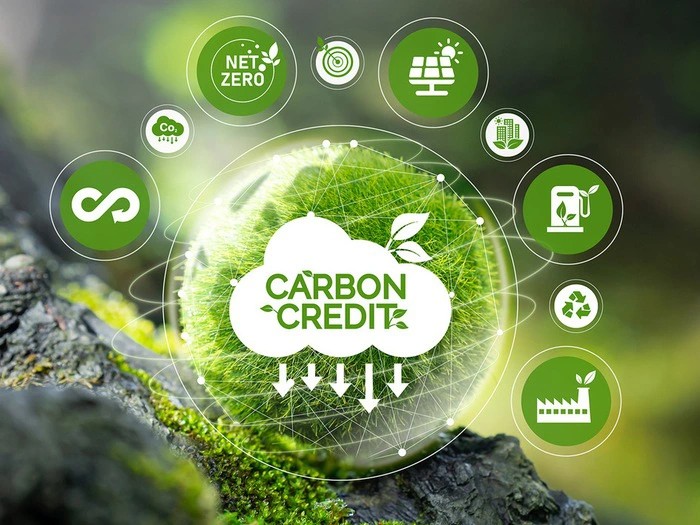
Reducing greenhouse gas emissions and carbon market development to fulfill COP 26 commitments
Vietnam aims to reduce greenhouse gas (GHG) emissions and develop a carbon market, aligning with its COP 26 commitments. This requires close coordination and comprehensive solutions from all sectors and communities.

What can be learned from VinFast's success after becoming the best-selling car brand in Vietnam?
VinFast's market-leading sales in Vietnam in September marked a major turning point, as a domestic electric vehicle brand outpaced international competitors.
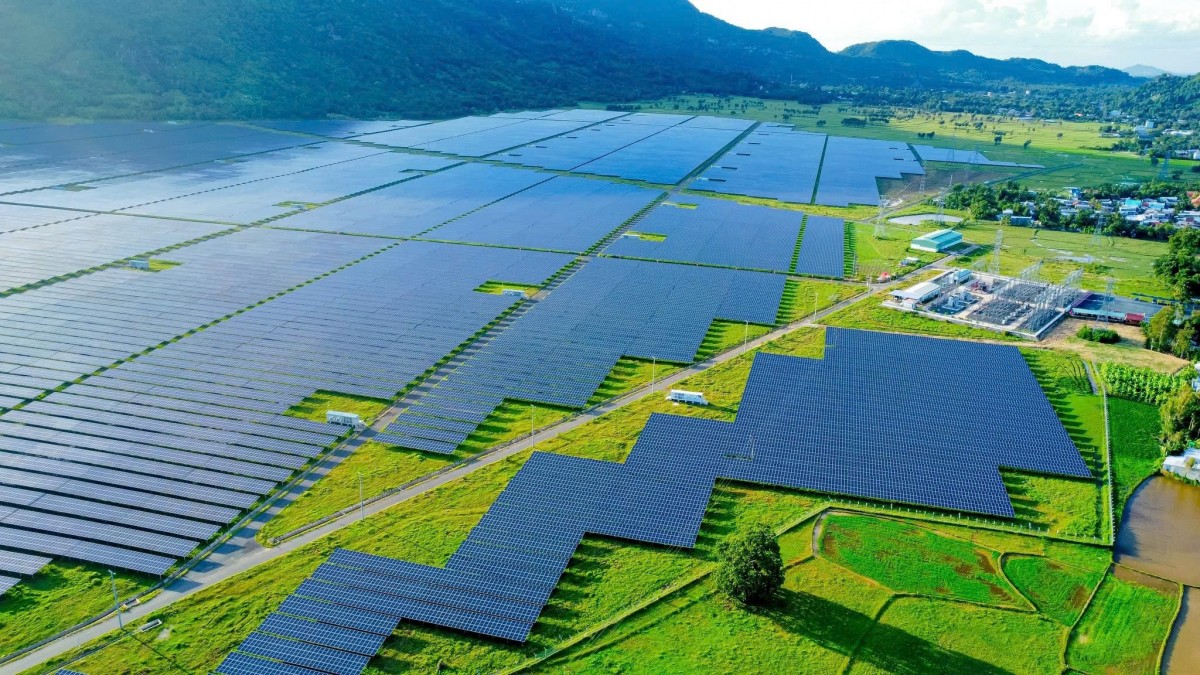
Nurturing life for the future with clean energy
Vietnam has just endured Typhoon No. 3, leaving behind a trail of destruction and loss that makes us all feel small against Mother Nature. It is time for a change, time to nurture and protect our living environment.

Practical applications of carbon credits in the economy. Part XI: Bridging policy and strategy for the carbon credit market
To develop the carbon credit market, the Government and businesses must improve cooperation and communication. The Government needs to provide clear policies, while businesses must adopt emission reduction strategies and leverage carbon credits.

Yen Bai: Implementing the plan to manage and eliminate ozone-depleting substances and greenhouse gases
The People's Committee of Yen Bai province has just issued document No. 3005/UBND-TNMT on the implementation of the National Plan for the management and elimination of ozone-depleting substances and controlled greenhouse gases.
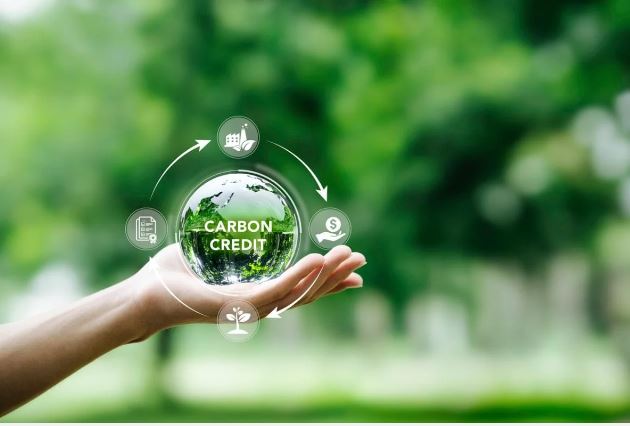
Practical applications of carbon credits in the economy. Part XIX: Training human resources - A strategic and urgent task for the carbon credit market
Training human resources for the carbon credit market is an urgent task that supports sustainable development. A skilled team of experts with project implementation skills, this leads to improved emission reduction and environmental protection.
Đọc thêm Socially Responsible Enterprise
When artists do business – livelihood is no poetry!
A series of indictments, arrests, and bankruptcies among artists has sounded a serious alarm.
Hanoi’s economy grows 7.92% in first nine months of 2025, FDI surges nearly threefold
Hanoi maintained robust growth momentum in the first nine months of 2025 with GRDP up 7.92% year-on-year, driven by strong services and construction sectors.
Vietnam’s strong gdp growth fails to ease labor market distress
As the year draws to a close, the pressing challenge for businesses and policymakers is how to rebuild worker morale, retain top talent, and stabilize employment amid lingering uncertainty.
Vietnam ramps up efforts to lift EU “Yellow Card” on Illegal fishing
Prime Minister Pham Minh Chinh has called for intensified and coordinated efforts to have the European Commission’s “yellow card” on Vietnam’s fisheries removed within this year.
Quang Tri calls for investment in wind power plant project worth over VND 1,100 billion
The People’s Committee of Quang Tri Province has officially announced the Hưng Bắc Wind Power Plant Project as part of its investment invitation portfolio.
Hanoi receives two million visitors during the four-day National Day holidays
From August 30 to September 2, Hanoi received around 2.08 million visitors during the four-day National Day holidays , three times higher than the figure in the same period last year, the municipal Department of Tourism reported.
Ca Mau gradually makes its mark on the national tourism map
By 2025, Ca Mau aims to attract 8.4 million visitors and achieve a total revenue exceeding 8,585 billion VND, contributing to the province's double-digit growth target.
UNDP Resident Representative hails Vietnam as an emerging economic powerhouse
Millions of people have been lifted out of poverty, hunger has been eliminated, and the economy has maintained consistent growth rates of over 6 per cent, UNDP Resident Representative in Vietnam Ramla Khalidi remarks.
Alpha Books Chairman Nguyen Canh Binh: The survival weapons of Vietnamese entrepreneurs in the age of AI.
Alpha Books Chairman Nguyen Canh Binh shares three essential lessons to ensure the survival and growth of Vietnamese entrepreneurs in the digital age: creativity, connection, and collective intelligence.
Mr. Le Viet Thang, CEO of 1Office: "Don’t use old solutions for new ai challenges"
As artificial intelligence (AI) reshapes the global technology landscape, Vietnam is taking decisive steps to establish a National AI Research and Development Center, alongside the National Data Center.




